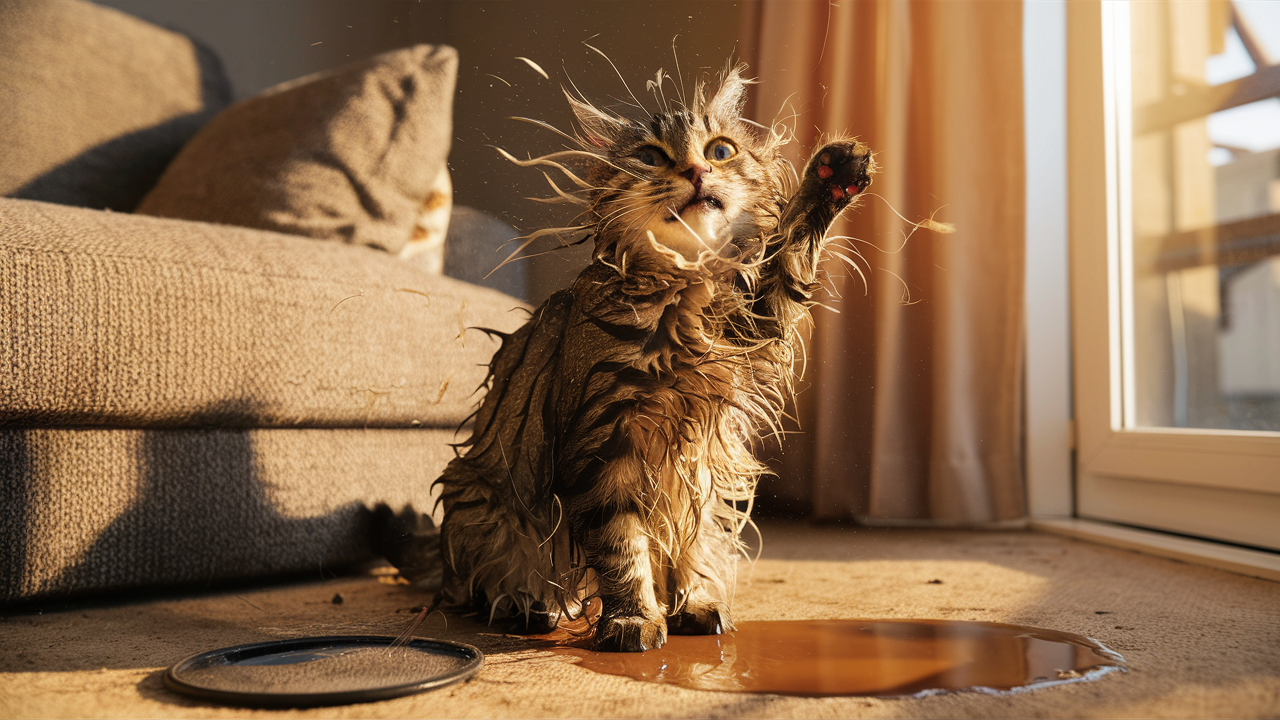Why is my cat shaking? This question can spark a wave of concern for any cat owner. This article, Cat Safety Tips will explore the various reasons behind a cat’s trembling, helping you understand the potential causes and when to seek professional help.
What is shivering?
Shivering is an involuntary muscle contraction that generates heat in the body. It’s a natural response to cold temperatures and is a way for the body to maintain its core temperature.
Here’s how shivering works:
- Cold Sensation: When the body’s temperature drops below its normal range, the hypothalamus (a part of the brain that regulates body temperature) sends signals to the muscles.
- Muscle Contractions: The muscles begin to contract rapidly and rhythmically, creating a shaking motion.
- Heat Production: These muscle contractions burn energy and generate heat, helping to raise the body’s temperature back to a normal level.
Shivering is a common and usually harmless response to cold. However, if shivering persists for a long time or is accompanied by other symptoms, it’s important to seek medical attention, as it could indicate a more serious underlying condition.
Why is my cat shaking?
Seeing your cat tremble or shake can be alarming, but it’s important to remember that not all shaking is a cause for concern. Here are some common reasons why is my cat trembling, ranging from harmless to potentially serious:
Excitement or Stress
Just like humans, cats can experience muscle tremors when they’re feeling excited or stressed. Think about playtime, a new visitor, or even a loud noise – these situations can trigger a temporary shaking response.
Cold
Cats, like humans, can shiver when they’re cold. If your cat is shaking and you notice they’re cold, try warming them up with a blanket or a warm spot near a heat source.
Pain or Illness
Pain or illness can also cause muscle tremors or weakness in cats. Conditions like arthritis, neurological disorders, or even poisoning can lead to shaking, so it’s important to pay attention to other symptoms and seek veterinary attention if you suspect something is wrong.
Seizures
Seizures in cats are characterized by sudden, involuntary muscle spasms, loss of consciousness, and sometimes drooling. If you witness a seizure, it’s crucial to seek immediate veterinary attention.

Other Neurological Conditions
Certain neurological conditions, such as vestibular disease (affecting balance) or cerebellar hypoplasia (affecting coordination), can also cause shaking. These conditions often have other noticeable symptoms, such as head tilt, circling, or difficulty walking.
How to help cats stop trembling?
Helping a cat stop trembling depends on the underlying cause. Here’s a breakdown of how to approach different situations:
Excitement or Stress
- Calm Environment: Create a calm and quiet environment. Reduce noise and distractions.
- Gentle Handling: Handle the cat gently and avoid sudden movements.
- Distraction: Offer a favorite toy or treat to redirect their attention.
Cold
- Warmth: Provide a warm blanket, heated bed, or a warm spot near a heat source.
- Insulation: Ensure the cat has access to a warm, insulated space during cold weather.
Pain or Illness
- Veterinary Visit: Take the cat to the vet for a thorough examination and diagnosis.
- Medication: The vet may prescribe medication to address the underlying cause of the pain or illness.
Seizures
- Safety: Move any objects that could cause harm during a seizure.
- Stay Calm: Stay calm and observe the seizure.
- Veterinary Care: Seek immediate veterinary attention after the seizure to rule out underlying causes and receive appropriate treatment.
Other Neurological Conditions
- Veterinary Diagnosis: Consult with a veterinarian to diagnose the specific neurological condition.
- Treatment: Follow the vet’s recommendations for treatment, which may include medication, physical therapy, or supportive care.
Important Note:
- Don’t Force: Never force a cat to stop trembling or try to restrain them during a seizure.
- Seek Professional Help: If you’re unsure about the cause of your cat’s trembling or if it persists, contact your veterinarian for guidance.
When to seek veterinary attention?
While some shaking in cats is normal, there are times when it’s crucial to seek professional help. Here are some key indicators that your cat’s shaking might require a visit to the vet:
Severe or Persistent Shaking
If your cat’s shaking is severe, lasting for an extended period, or doesn’t seem to subside, it’s important to seek veterinary attention. This could be a sign of a more serious underlying issue.
Other Symptoms
If your cat’s shaking is accompanied by other concerning symptoms like lethargy, vomiting, diarrhea, loss of appetite, or changes in behavior, it’s essential to consult with your veterinarian. These symptoms could indicate a medical condition requiring treatment.
Sudden Onset
If your cat’s shaking starts suddenly and without any apparent reason, it’s often a sign of a serious medical condition. Don’t hesitate to seek immediate veterinary attention in such cases. Early diagnosis and treatment can make a significant difference in your cat’s recovery.
In conclusion
Understanding why your cat is shaking can be a source of worry, but it’s important to remember that not all trembling is a cause for concern. From playful jitters to more serious medical conditions, the reasons behind a trembling cat can vary greatly.
By observing your cat’s behavior, recognizing potential triggers, and seeking professional help when necessary, you can address the root of the problem and provide your furry friend with the care they need.

Related Post
Why Do Cats Get The Zoomies? Unlocking the Secrets
Cat Sleeps By My Head? Decoding Feline Cuddles
Can A Cat Be Spayed While In Heat? Risks And Benefits